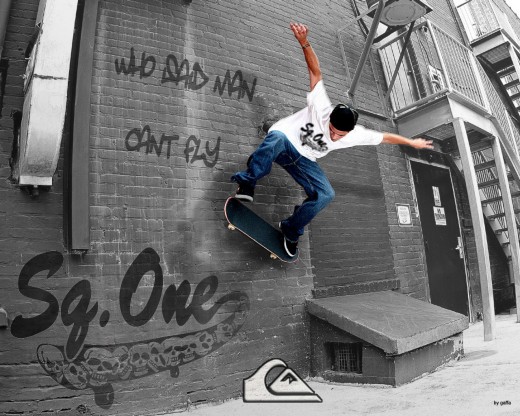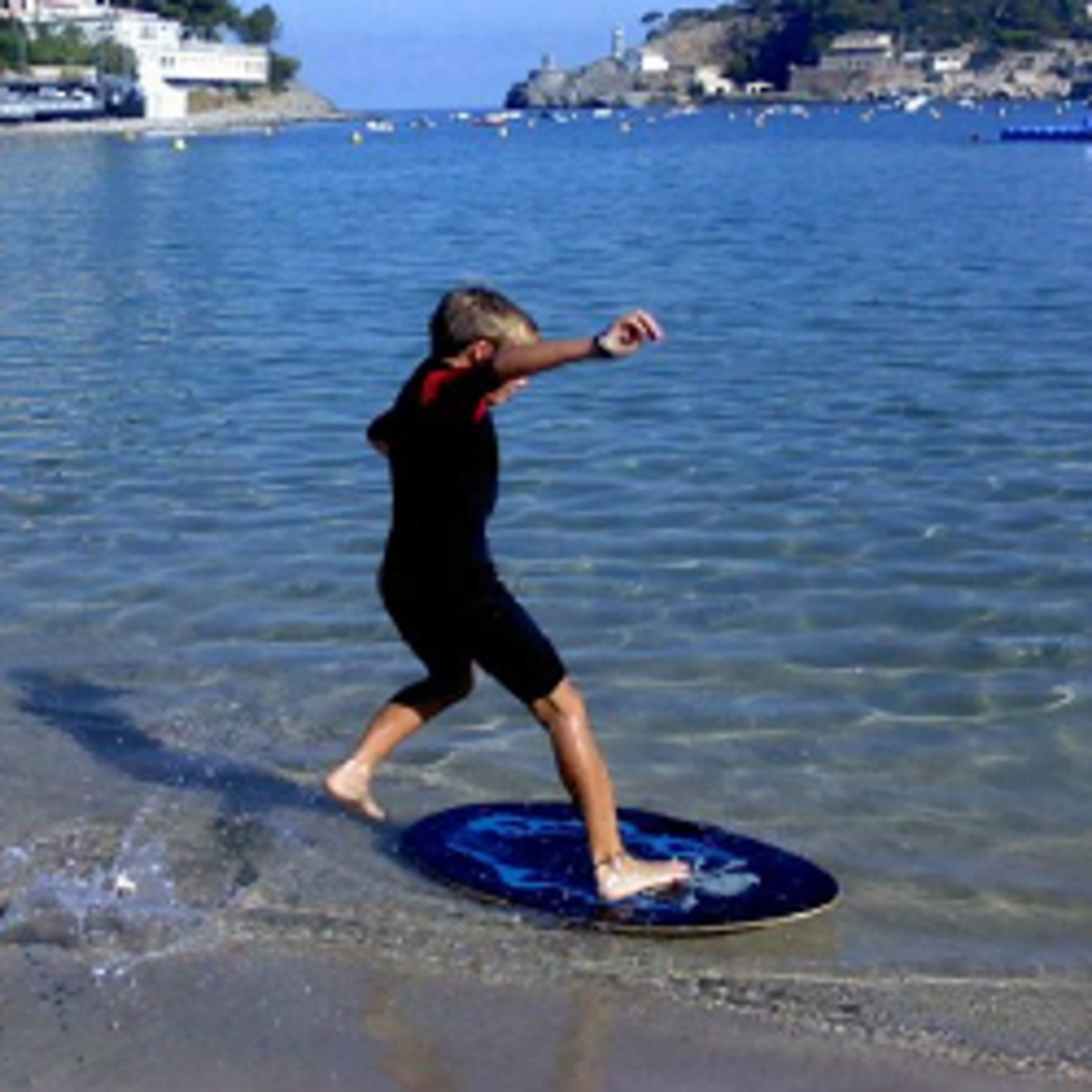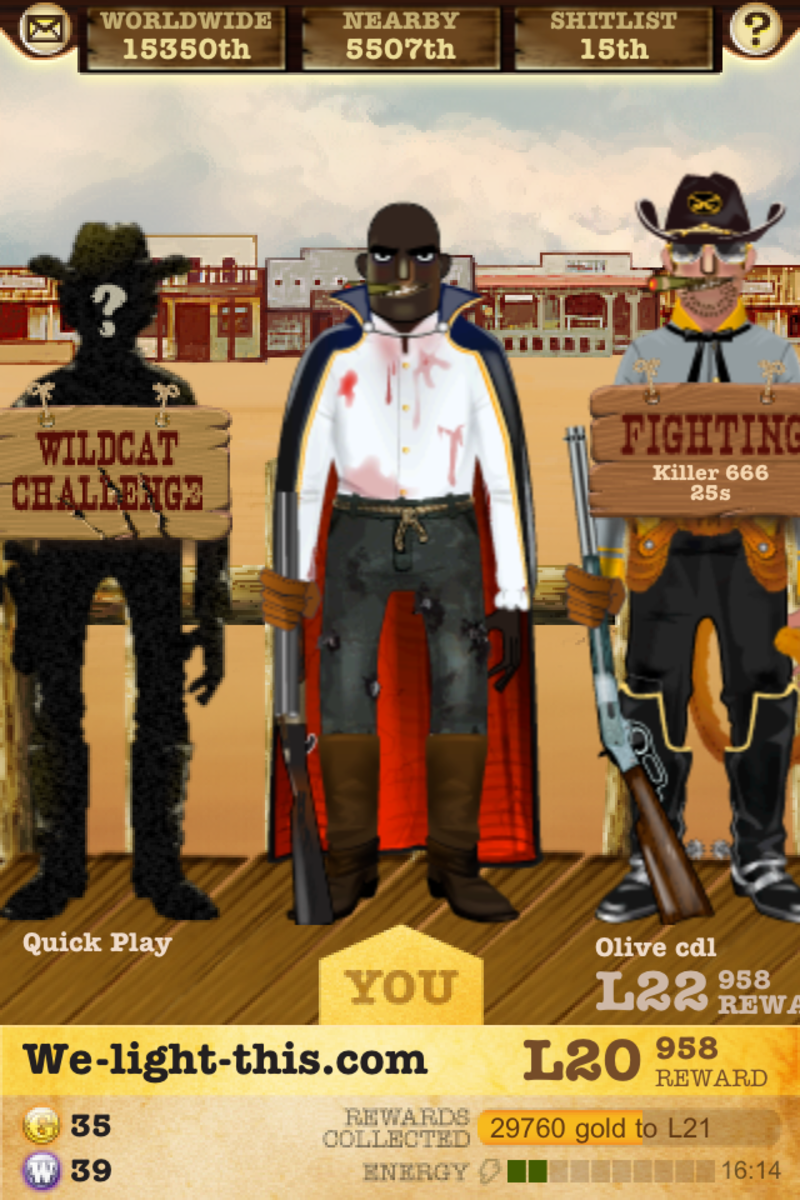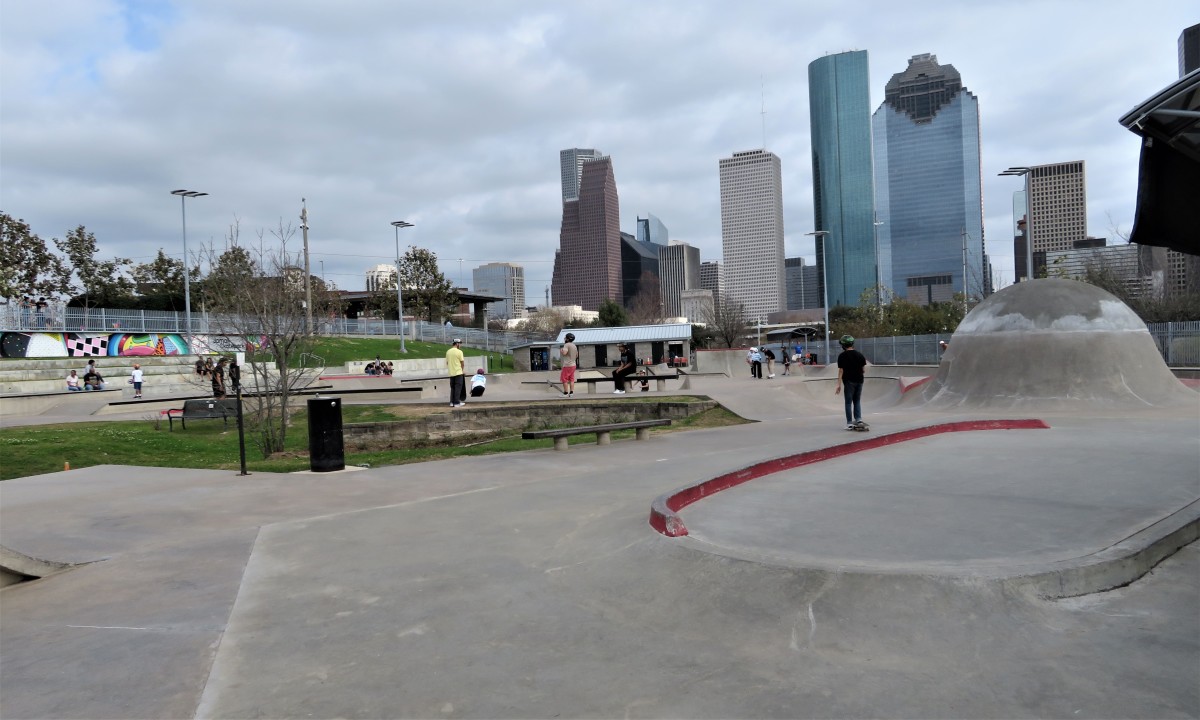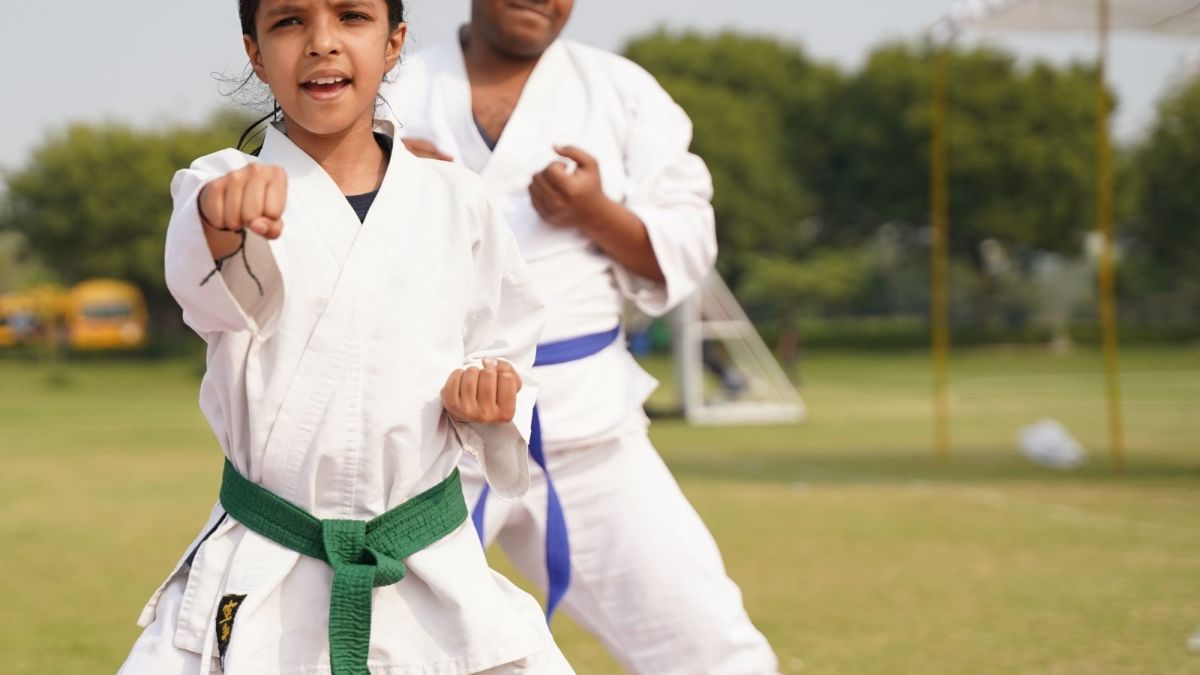Beginner and Immediate Skateboarding Tricks and Tips
After getting done with the basic of skateboarding, it's time to head for some real skateboarding tricks. There are some skateboarding tricks which are easy to do and there are some others who need immediate skills before some advanced tricks can be attempted. Riding a skateboard could be hard in the beginning but once you have mastered some skateboarding tricks, it will eventually become easy. All it takes if you efforts, with practices you will surely become a pro in no time.
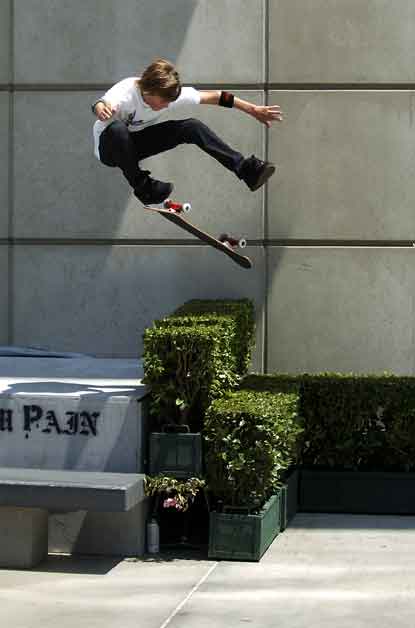
How to Ollie
How to Manual
How to Shuvit
How to Pop Shuvit
Basic Skateboarding Tricks
Once you are comfortable skateboarding around the house, its is time to learn some cool tricks. These basic skateboarding tricks are not hard to learn but yet it will take some time and efforts to do them well. And by the way, having learned these basic skateboarding tricks will give you a good foundation on performing harder or more advanced stuffs.
Remember that each skateboarding trick is built upon one another particular those on those basic stuffs.
Here are some basic skateboarding tricks you should learn at this stage:
- How to Ollie
The ollie, truth to be told is by far the most important trick in skateboarding. Without properly knowing this you won't be able to perform 99% of all other skateboarding tricks. Some of the more advanced moves such as the kick flip, pop shove it, heel flip and etc involved ollie. To do the ollie, place your front foot in the middle of the skateboard and your back foot on the tail. When you are ready snap the tail of your skateboard down, and then jump. After the jump, quickly move your front foot up to the truck bolts at the front of the board to even it out. Well, that's how you perform the ollie move and like any other tricks, it will take some trials before you succeed. - How to do a Manual
A manual is a skateboarding technique in which the front trucks (or wheels) of the board lift up off the ground while the back wheels are still riding. This move is very similar to a wheelie that you would do on a bicycle. This doesn't hard but it does require maintaining a proper balance to keep the skateboard tail from hitting the ground. To do a manual, star rolling the board at a slow and steady pace. Then, shift weight to your back foot and start putting downward pressure on the tail of the board. As more pressure is continuously applied, the front trucks will lift off the ground automatically. The thing that you need to pay attention is to find the right balance so that the front trucks will keep off the ground without the tail of the board hitting the ground. That's how manual is done!
- How to Sholve-It/ Shuvit
The sholve-it move is very similar to the pop shovle-it, only that it does not involve an ollie in the mix. The sholve-it is a great trick for new skaters and it doesn't involve any real learning curve. To do a sholve-it, place your back foot up on the tail of the skateboard and your front foot on the mid section of the deck. Lift the board up as if you are going to perform a manual, and which then kick your front foot to the left or right (depends on which side you can do better). If you did this properly, the board should pivot and spin underneath your feet successfully. For beginners, start with the 180 sholve-it first and which after landing a few on these moves, you can start attempting a 360 sholve-it or even a 540. - How to Pop Shove-It/ Pop Shuvit
A pop shove-it is when your skateboard does a 180 spin in the air. To do a pop shove-it, first you'll have to perform an ollie (so you have to master this before pop shuvit) and which quickly followed by moving your back foot backward in a sweeping motion. At the same time, you will have to move your front foot forward just a little bit, but not too much. Then, after the board does a 180 spin, catch the baord with your feet and land. This is how to do a pop sholve-it.
Skateboarding Tricks and Tecniques
Those are some of the skateboarding tricks for beginners. After you are done with those tricks, you can try out more advanced skateboarding tricks such as the grinds, kick flip, heel flip and etc.
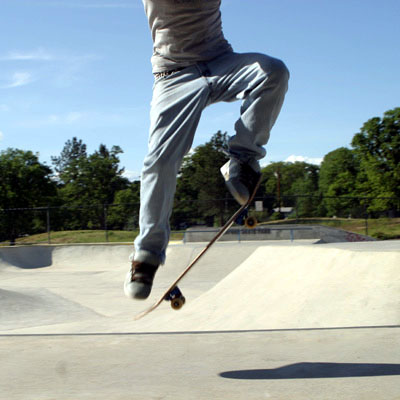
How to Kickflip
How to Heelflip
How to Varial Flip
More Advanced Level
Once you have learned those tricks mentioned above and do them well, you are now ready for more advanced skateboard tricks. Again, it is important to remind you that you must 'have graduated' from the basic skateboarding tricks before continuing with the more advanced level of tricks.
Some of the skateboarding tricks that are of more advanced are:
Spin/Flip Tricks
The more advanced stuffs of skateboarding include flip and spin tricks. Skateboarding flip tricks are very cool and everyone that into this extreme game is always looking forward to it. These include kickflips, backside flips, heelflip,varial flip and 360 flips. On the other hand, spin tricks are a great way for skateboarder to change things up and look very stylish. Some spin tricks are 360 pop shuvits, big spins, and 360s. Once you have mastered all these tricks, you can take your skateboarding to the next level by combining the flip and spin tricks.
- How to KickFlip
To kickflip, place your front foot just right behind the second set of bolts, they are right next to the bump in the desing of your skateboard. Your back foot should be positioned on the tail of the board as you are ready to ollie. As you ollie, drop your back foot and flick your front foot off to the side of the board. While you ar in the air, your board should do one spin underneath you and the as it is going to land, catch it with your feet. - How to HeelFlip
Heelflip is quite similar to the kickflip, it is just a little different between two of them. To do a heelflip, position your feet just like how you are going to do an ollie. Put your front foot in a way that it is spread evenly across the board while the rear foot on the tail of the board. To begin, pop the board (snap the board's tail down with the back foot) like just you are going to ollie. Then, drag your front foot up the board like how you do it in the ollie but this time, kick it outward and cause the board to rotate. Raise your back foot away from the board so that it can flip freely. Once the board has flipped once, drop your feet and catch it. You should be landing as the board completes the flip. - Doing the Varial Flip
Varial flip is when a trick when there is a lateral rotation of the skateboarder; there should be a varial rotation of 180 degrees. This trick is actually a combination of the kickflip an pop sholve-it tricks, and that's why you should have mastered both of these individual skateboarding tricks before attempting a varial flip. To do the varial flip, you will need your toes to be off the side of the tail, just like how you do a pop sholve-it. Now, when you stomp onto the tail, the board will rotate. Your front foot will have to perform like the kickflip trick. You will have to slide your front foot off the front of the board at the same time as the board pops and rotates. After the 180 rotation, catch your board as it hits the ground. You have to keep yourself just right so that you will be balance when landed.
Related links:
- How to Skateboard for Beginners
Skateboarding is an extreme sports that is loved by people around the world. This is a challenging sports and it provides the opportunity for the skateboarders to learn many essential thing such as balancing...
